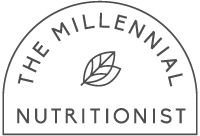How to Use Balanced Meals for Your Weight Loss Journey
Written by: Katie Barker, MS
Weight loss can be complex depending on each individual’s circumstances, however there are ways to keep it simple! When you’ve mastered learning about food through calorie tracking, you can then focus on creating meals that will nourish your body AND keep you satisfied! You can do this by making meals balanced by including multiple food groups. A balanced meal is one that includes all three macronutrients, as well as a variety of foods that will give you vitamins, minerals, and fiber. Here’s your step-by-step guide to creating a balanced meal:
Step 1: Have a carbohydrate source. Foods with carbohydrates include fruits, grains, and starches (like potatoes). These foods provide you with energy. In fact, this is our body’s preferred source of energy so when we are eating too little of these foods, we may experience stronger cravings. To avoid blood sugar spikes, focus on healthy carbohydrates with fiber- such as whole grains! Whole grains include rice, quinoa, oatmeal, and whole grain bread, tortillas, or crackers.
Carbohydrate Foods Include:
Bread
Tortillas
Oatmeal
Rice
Quinoa
Farro
Potatoes
Corn
Crackers
Tortilla chips
Popcorn
Pasta
Step 2: Add your protein! Optimize your weight loss potential by focusing on protein. This helps your body sustain lean muscle mass, metabolism, and fullness throughout the day. Protein can come from animal sources, such as meats, fish, eggs, and dairy, or plant sources, like beans, lentils, and nuts. Prioritize lean proteins, such as skinless chicken, shrimp, and tofu.
Protein Foods Include:
Chicken
Turkey
Pork
Ground beef
Steak
Tofu
Edamame
Beans (black, chickpeas, kidney, etc.)
Lentils
Cheese
Eggs
Protein shakes
Shrimp
Fish
Peanut butter
Chia seeds
Step 3: Remember your fats. Fat is the macronutrient with the highest calorie content per gram, so it’s important to prioritize other macronutrients first. However, fat is still necessary for regulating hormones and keeping us satisfied after eating! Typically, fat is found in most protein foods, especially fish, beef, or dairy. However, be mindful that fat is also found in butter, oils, and nuts which we can easily forget. Bottom line- fat is essential! Try to pick healthier sources of fats, such as olive oil and fish.
Healthy Fats Include:
Nuts
Olive oil
Other plant oils (avocado, coconut, etc.)
Fish
Egg yolks
Avocados
Chia seeds
Dark chocolate
Pumpkin seeds
Step 4: Ensure you have plenty of produce! Produce is where you will get most of the vitamins and minerals that your body needs. When your body is not getting enough vitamins and minerals, it may lead to increased cravings. For example, your body may crave chocolate because it needs iron or magnesium. Produce will also contribute to feelings of fullness, because it has fiber. Fiber is a type of carbohydrate that our body does not absorb. This, and the fact that produce has high water content, is why it is typically low-calorie. So, load up on those veggies!
Fruits and Veggies Include:
Apple
Watermelon
Berries
Orange
Pears
Nectarine
Grapes
Artichoke
Green beans
Spinach
Kale
Broccoli
Cauliflower
Brussel sprouts
Cabbage
Carrots
Swiss chard
Bell pepper
Having a combination of macronutrients is the key to staying full and stabilizing blood sugar levels throughout the day. This will help you lose weight by curbing cravings and preventing over or under-eating. Eating a variety of produce will ensure you have all of the micronutrients you need to complete reactions on a cellular level, which contributes to a healthy metabolism. One of the best ways to make a balanced meal is creating a “grain bowl” that includes a whole grain, lean protein, and produce.
Grain Bowl Combinations:
Grain:
Quinoa
Rice
Farro
Millet
Lean Protein:
Chicken strips
Shrimp
Roasted chickpeas
Tofu
Produce:
Sauteed greens
Roasted broccoli
Roasted carrots
Bell pepper strips
Low-Calorie Flavorings:
Peanut sauce
Cilantro & lime
Roasted Garlic
Soy sauce
Red pepper flakes






